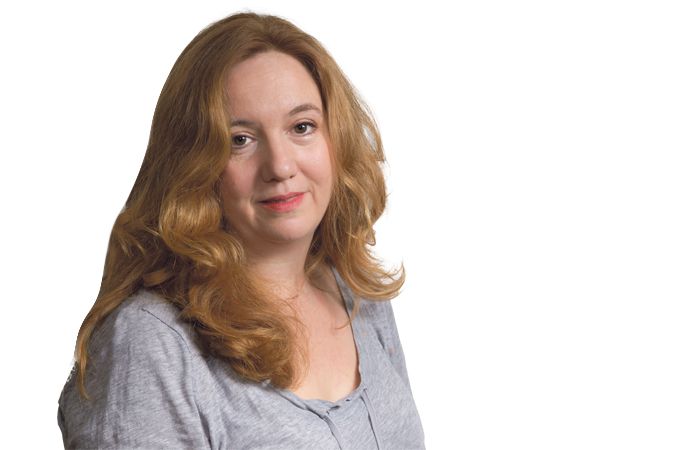Opinion
Brick by Brick: Born to burn
Stephanie Brickman
This article is more than 9 years old.
Apart from a couple of times in my early teens, I have never sunbathed in my life.
Inherently pointless
It’s not because I disapprove, it’s just inherently pointless. I am a born redhead; my skin is pale blue with pink tendencies – tendencies that become rampant when combined with sun.
In other words, after a short burst of sun exposure I turn a shocking pink and my face actually clashes with my red hair. The effect is quasi psychedelic. The pink does not, and will never, settle into a tan. I just go white again, with a blanket of freckles that will, alas, never join up.
Blowtorch to the nose
To give you a sense of scale, I once got sunstroke on the Norfolk Broads – possibly the least likely place, in the already unlikely British Isles, to get on a sticky wicket with sunshine.
About five years ago, a red patch appeared on the end of my nose. I thought it was a pimple. “Oh, how brief the window between pimples and wrinkles in this life,” I lamented. But it was not a spot, it was a patch of shiny, flaky skin.
I was sent to a Scottish dermatologist. “Redheads,” he said conspiratorially. “Are best living in dark and misty places.” As he assaulted my nose with a thing that’s rather like a hole-puncher, he said: “This will leave a mark.” It did.
The biopsy reported it was a patch of actinic keratosis, which is a posh term for sun-damaged skin, which can lead to cancer. It was at this point that I considered relocation to a bog in Ireland.
On returning to the dermatologist, he used something resembling a blow torch – only it was dry ice and therefore very cold. As he blasted the bad cells from the end of my nose, he said: “Of course, there’s a cream that you can use for
this.”
“Sounds like a bloody good idea,” I interjected.
Etna has erupted
Fast-forward to the present day, and the nasal weirdness has returned and I have been sent to a Danish dermatologist. He is up for giving me the cream rather than the blowtorch. He gives me a leaflet with pictures of patches of mutant skin. Clearly some kind of pizza-like eruption will happen if I don’t use the cream.
Turns out I’m wrong. The pizza thing is what happens if I do use the cream. The doctor explains that the cream is like a kind of localised chemotherapy. You use it three days in a row, and then over the next two weeks the naughty cells shrivel, die and fall off.
He then softens his tone and informs me apologetically that it’s very expensive: more than 1,000 kroner for three doses.
Put me where the sun don’t …
I find the final bit of information grotesque, considering what you can pay for a cup of coffee in this city. It’s my nose, it’s in the middle of my face, I need it more than 30 cups of coffee.
Admonished and warned about exposing myself to the sun, I leave the doctor’s practice. The lakes are frozen and ducks and swans are waddling on the thick ice in the last of the afternoon light seeping through thick cloud. An anaemic sun, like a battery hen’s egg yolk, languishes briefly on the horizon before giving up.
But this is Denmark in the darkness of winter. What sun? This was supposed to be my bog.
About
Stephanie Brickman
Stephanie Brickman made the hop across the North Sea from Scotland to live in Denmark with her distinctly un-Danish family. This 40-something mother, wife and superstar is delighted to share her learning curve, rich as it is with laughs, blunders and expert witnesses.











































